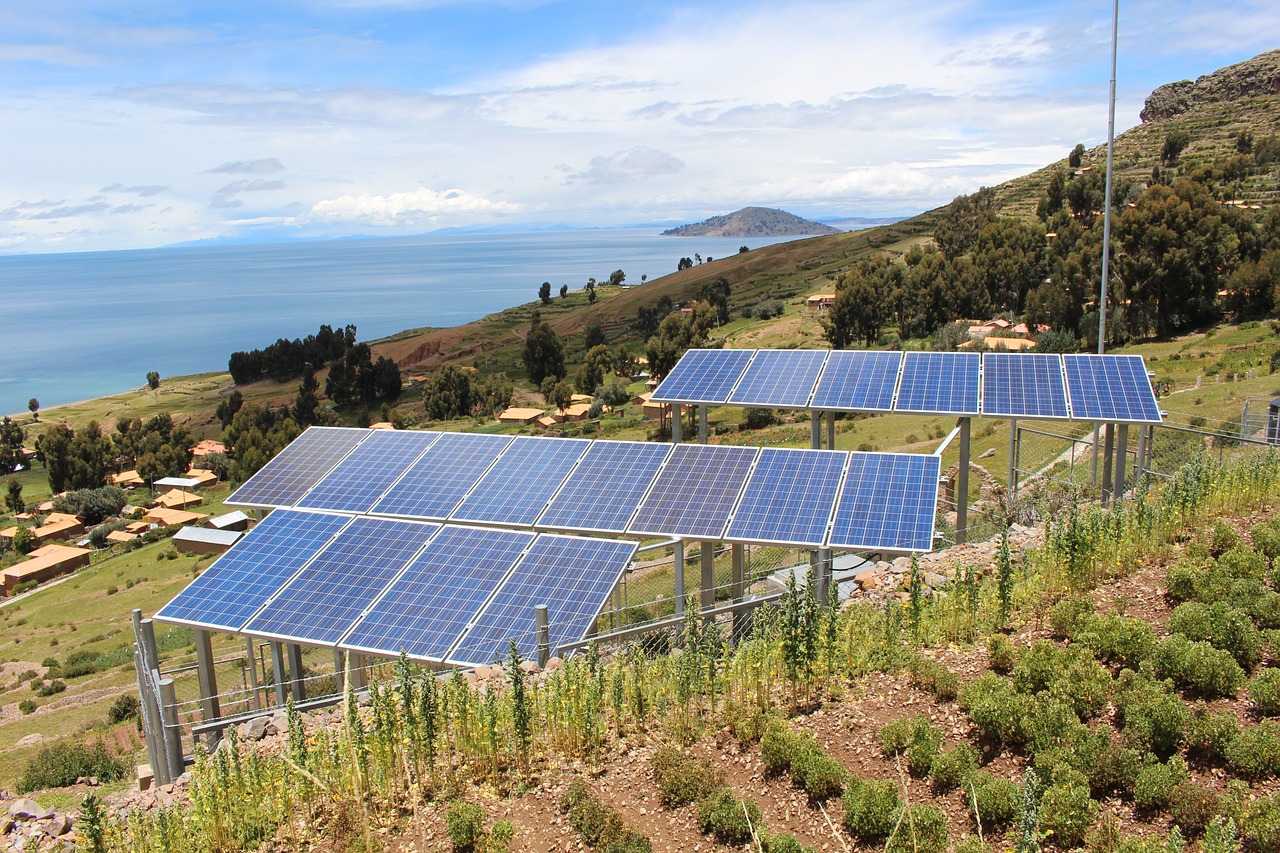Picture this: a delicate butterfly lands on your window, its wings catching the sunlight in a display of shimmering blues and greens that seem to dance with every movement. What if I told you that this seemingly simple natural phenomenon holds the key to revolutionizing how we capture energy from the sun? Scientists worldwide are discovering that butterfly wings aren’t just beautiful – they’re engineering marvels that could transform our approach to solar technology. The intricate structures that create those mesmerizing colors are now inspiring breakthroughs in photovoltaic efficiency that could change everything we know about renewable energy.
The Hidden Engineering Marvel of Butterfly Wings
Butterfly wings are far more complex than they appear to the naked eye. These delicate structures contain microscopic scales arranged in intricate patterns that manipulate light in ways that would make any engineer jealous. Each scale is covered with ridges, grooves, and photonic crystals that interact with light waves to create the brilliant colors we see.
The secret lies in structural coloration – a phenomenon where colors are produced not by pigments, but by the physical structure of the wing itself. Think of it like a natural prism that breaks white light into its component colors, except far more sophisticated. These nano-scale structures can reflect, refract, and scatter light with precision that our best optical equipment struggles to match.
What makes this even more remarkable is that butterfly wings have evolved over millions of years to maximize light absorption and reflection for survival purposes. Some species use their wing structures to confuse predators, while others employ them to attract mates. This evolutionary fine-tuning has created some of the most efficient light-manipulating surfaces found in nature.
Nature’s Light-Trapping Secrets Revealed

Scientists have discovered that certain butterfly species possess wings with structures that trap light more effectively than conventional solar panels. The Morpho butterfly, for instance, has wings covered in microscopic Christmas tree-shaped structures that bounce light back and forth multiple times before it escapes. This creates an incredibly efficient light-trapping mechanism that maximizes the interaction between photons and the wing surface.
Research teams using powerful electron microscopes have revealed that these structures operate on multiple scales simultaneously. The larger ridges guide light into smaller channels, while nano-scale features ensure that virtually no photon escapes without being processed. It’s like having a maze designed specifically to capture and concentrate light energy.
The efficiency of these natural systems is staggering. Some butterfly wings can absorb up to 99% of incident light across certain wavelengths, far exceeding the performance of most artificial solar collectors. This level of light management represents millions of years of evolutionary optimization that we’re only beginning to understand.
The Science Behind Structural Coloration

Understanding how butterfly wings create their stunning colors without pigments requires diving into the fascinating world of photonic structures. These wings contain layers of materials with different refractive indices – essentially, they bend light at different angles. When light hits these layered structures, some wavelengths are reflected while others are transmitted, creating the specific colors we perceive.
The thickness of each layer is crucial and must be precisely controlled to achieve the desired optical effects. In many butterfly species, these layers are only a few hundred nanometers thick – smaller than the wavelength of visible light itself. This precision rivals the manufacturing tolerances of our most advanced semiconductor facilities.
What’s particularly intriguing is how these structures can be tuned to work across different parts of the electromagnetic spectrum. Some butterflies have evolved wings that manipulate not just visible light, but also ultraviolet and near-infrared radiation. This broad-spectrum capability is exactly what solar panel designers are trying to achieve to capture more of the sun’s energy.
Morpho Butterflies: The Gold Standard for Light Manipulation

The Morpho butterfly species from Central and South America have become the poster child for bio-inspired solar technology. Their brilliant blue wings don’t contain a single blue pigment – instead, they achieve their stunning appearance through incredibly sophisticated optical engineering. The wings are covered in scales that contain multiple layers of microscopic structures, each designed to interact with specific wavelengths of light.
These butterflies have evolved wing structures that can be seen from over a mile away, making them visible to potential mates across vast distances. This visibility is achieved through a combination of interference patterns and light scattering that amplifies the intensity of reflected blue light. The same principles that make these butterflies so visible could be applied to solar panels to improve their light-gathering capabilities.
Researchers have found that Morpho wings maintain their optical properties even when wet, dusty, or damaged. This durability is crucial for practical applications, as solar panels must function reliably in various environmental conditions. The self-cleaning properties of these wings, combined with their robust optical performance, make them ideal models for next-generation solar technology.
Biomimetic Solar Cell Design Principles
Scientists are now applying the lessons learned from butterfly wings to create biomimetic solar cells that could dramatically improve energy conversion efficiency. These designs incorporate nano-scale structures that mimic the light-trapping mechanisms found in nature. The goal is to create solar panels that can capture and convert more sunlight into electricity than ever before possible.
One approach involves creating textured surfaces on solar cells that replicate the hierarchical structures found on butterfly wings. These surfaces increase the path length of light within the solar cell, giving photons more opportunities to be absorbed and converted into electrical energy. It’s like creating a labyrinth for light where every turn leads to energy conversion.
Another promising technique involves using the same materials and structural principles that butterflies use to manipulate light. By incorporating photonic crystals and multilayer structures into solar panels, researchers are creating devices that can selectively absorb certain wavelengths while reflecting others. This selectivity allows for better optimization of the solar spectrum for maximum energy conversion.
Nanostructures That Revolutionize Energy Capture

The key to butterfly-inspired solar technology lies in precisely engineered nanostructures that can manipulate light at the molecular level. These structures are typically created using advanced manufacturing techniques like electron beam lithography or self-assembly processes. The goal is to replicate the complex geometries found in butterfly wings while maintaining the precision required for optimal optical performance.
One breakthrough involves creating artificial scales that mimic the Christmas tree-like structures found on Morpho butterfly wings. These synthetic scales can be applied to conventional solar panels to significantly improve their light absorption capabilities. Early prototypes have shown improvements in efficiency of up to 30% compared to traditional flat solar panels.
The manufacturing challenge is enormous – creating billions of nano-scale structures with the precision found in nature requires pushing the boundaries of current technology. However, advances in nanotechnology and materials science are making it increasingly feasible to produce these structures at scale. The potential rewards justify the investment in developing these manufacturing capabilities.
Anti-Reflective Coatings Inspired by Nature
Traditional solar panels lose significant amounts of energy due to reflection – sunlight that bounces off the surface without being converted to electricity. Butterfly wings have evolved sophisticated anti-reflective coatings that minimize this loss, and researchers are working to replicate these natural solutions. These bio-inspired coatings could dramatically improve the efficiency of solar panels by ensuring more light enters the photovoltaic material.
The anti-reflective properties of butterfly wings come from gradual changes in refractive index across the wing surface. Instead of an abrupt transition from air to wing material, there’s a smooth gradient that allows light to penetrate more easily. This principle is now being applied to create graded-index coatings for solar panels.
Some butterfly species have evolved wings that are virtually invisible to certain wavelengths of light, allowing them to avoid detection by predators or prey. This transparency is achieved through carefully structured materials that guide light through the wing without scattering or reflection. Similar principles could be used to create solar panels that are nearly invisible while still capturing energy effectively.
Light Management in Photovoltaic Systems

Effective light management is crucial for maximizing solar panel efficiency, and butterfly wings offer numerous insights into how to achieve this goal. The hierarchical structures found in these wings operate on multiple length scales simultaneously, from macro-scale ridges down to nano-scale features. This multi-scale approach allows for comprehensive light management that addresses different aspects of photon capture and manipulation.
One key insight from butterfly wing research is the importance of randomness in optical structures. While the overall wing architecture is highly organized, there are random variations that help scatter light in beneficial ways. This controlled randomness prevents the formation of optical dead zones where light might be trapped uselessly.
The temporal aspects of light management are also crucial. Butterfly wings must function effectively under varying lighting conditions throughout the day, from the intense midday sun to the diffuse light of dawn and dusk. Solar panels face the same challenge, and bio-inspired designs are helping to create systems that maintain high efficiency across a wide range of lighting conditions.
Manufacturing Challenges and Breakthrough Solutions

Creating butterfly-inspired solar panels requires manufacturing techniques that can produce structures at the nanometer scale with incredible precision. Traditional manufacturing methods are often inadequate for creating the complex geometries found in butterfly wings. However, new approaches are emerging that combine traditional techniques with cutting-edge nanotechnology.
Self-assembly processes show particular promise for creating butterfly-inspired structures. These techniques use the natural tendency of certain materials to organize themselves into ordered structures, similar to how butterfly wings develop during metamorphosis. By carefully controlling the conditions, researchers can guide these self-assembly processes to create the desired optical structures.
Another approach involves using advanced 3D printing techniques at the nanoscale. While still in early development, these methods could eventually allow for the mass production of complex optical structures that rival those found in nature. The key is developing printing materials and techniques that can achieve the required precision while maintaining cost-effectiveness for commercial applications.
Efficiency Improvements and Performance Gains

The potential efficiency improvements from butterfly-inspired solar technology are substantial and could transform the renewable energy landscape. Laboratory prototypes incorporating butterfly wing structures have demonstrated efficiency gains of 20-40% compared to conventional solar panels. These improvements come from better light trapping, reduced reflection losses, and enhanced absorption across a broader range of wavelengths.
Field tests of butterfly-inspired solar panels have shown consistent performance improvements under real-world conditions. The panels maintain their enhanced efficiency even when exposed to dust, moisture, and temperature variations that typically degrade conventional solar panel performance. This durability is crucial for practical applications where maintenance access may be limited.
The economic implications of these efficiency improvements are significant. A 30% increase in solar panel efficiency could reduce the cost of solar electricity by a similar percentage, making renewable energy more competitive with fossil fuels. This could accelerate the adoption of solar technology and help address climate change concerns.
Real-World Applications and Commercial Potential
Several companies are already working to commercialize butterfly-inspired solar technology, with the first products expected to reach the market within the next few years. These early applications will likely focus on high-value markets where the improved efficiency justifies the higher manufacturing costs. Space applications, where every gram of weight and every percentage point of efficiency matters, are particularly promising.
The technology also shows promise for building-integrated photovoltaics, where solar panels are incorporated directly into building materials. The aesthetic possibilities of butterfly-inspired designs could make solar panels more appealing to architects and building owners who are concerned about the visual impact of traditional solar installations.
Portable electronics represent another promising application area. Butterfly-inspired solar cells could enable the development of self-charging devices that can operate indefinitely without external power sources. This capability could revolutionize everything from smartphone design to remote sensing equipment.
Environmental Impact and Sustainability Benefits
The environmental benefits of butterfly-inspired solar technology extend beyond just improved efficiency. By maximizing energy capture from each solar panel, these designs reduce the total number of panels needed to meet energy demands. This reduction in material requirements could significantly decrease the environmental impact of solar installations.
The bio-inspired manufacturing processes being developed for these technologies often use less energy and fewer toxic chemicals than traditional semiconductor manufacturing. Some approaches even use biodegradable materials that could reduce the environmental impact of solar panel disposal at the end of their useful life.
The improved durability of butterfly-inspired solar panels could also extend their operational lifetime, reducing the frequency of replacement and further minimizing environmental impact. Some designs are projected to maintain high efficiency for 30-40 years, compared to the 20-25 year lifespan of conventional solar panels.
Future Research Directions and Innovations
The field of butterfly-inspired solar technology is rapidly evolving, with new discoveries and innovations emerging regularly. Researchers are exploring how other aspects of butterfly biology, such as their ability to navigate using polarized light, could be incorporated into solar panel designs. These additional capabilities could enable solar panels that can track the sun more effectively or adjust their properties based on environmental conditions.
Machine learning and artificial intelligence are being employed to optimize the design of butterfly-inspired structures. These computational approaches can explore millions of possible configurations to find the optimal balance between light capture, manufacturing feasibility, and cost-effectiveness. The speed of these optimization processes is accelerating the development of practical applications.
Collaborative research between biologists, engineers, and materials scientists is revealing new aspects of butterfly wing structure that could be applied to solar technology. Recent discoveries include wings that can actively change their optical properties and structures that remain functional even when partially damaged. These capabilities could lead to solar panels that are more adaptive and resilient than current designs.
The Broader Impact on Renewable Energy

Butterfly-inspired solar technology represents just one example of how nature is inspiring renewable energy innovations. The success of this approach is encouraging researchers to look at other natural systems for insights into energy capture and conversion. From the photosynthesis process in plants to the echolocation systems of bats, nature offers a wealth of solutions that could revolutionize how we generate and use energy.
The interdisciplinary nature of this research is fostering new collaborations between fields that traditionally had little interaction. Entomologists are working with electrical engineers, materials scientists are collaborating with evolutionary biologists, and computer scientists are partnering with optical physicists. These cross-disciplinary partnerships are accelerating innovation and leading to breakthrough discoveries.
The economic impact of these bio-inspired technologies could be transformative. As the efficiency and cost-effectiveness of solar panels improve, renewable energy becomes more competitive with fossil fuels. This competitiveness could accelerate the global transition to clean energy and help address climate change concerns while creating new economic opportunities.
The journey from observing a butterfly’s wing to revolutionizing solar technology showcases the incredible potential of learning from nature. These delicate creatures have spent millions of years perfecting their light-manipulation abilities, and we’re only beginning to scratch the surface of what they can teach us. The efficiency gains, environmental benefits, and commercial potential of butterfly-inspired solar panels could reshape our energy future in ways we’re still discovering.
As we face the urgent need to transition to renewable energy sources, solutions like these remind us that sometimes the most advanced technology comes from the most unexpected places. The next time you see a butterfly dancing in the sunlight, remember that you’re witnessing a masterpiece of natural engineering that could power our world. What other secrets is nature hiding in plain sight, waiting to transform our technological landscape?

